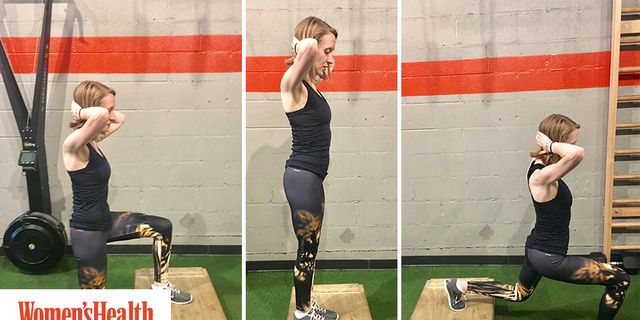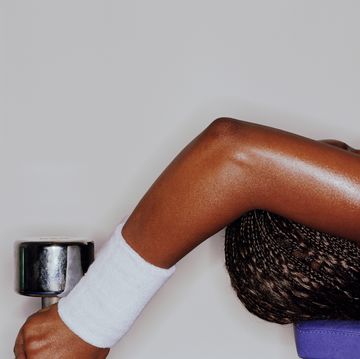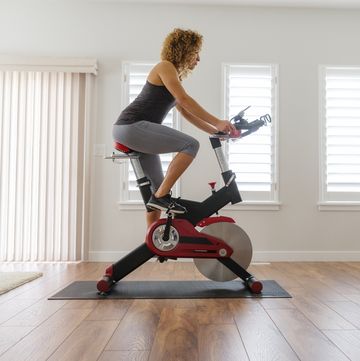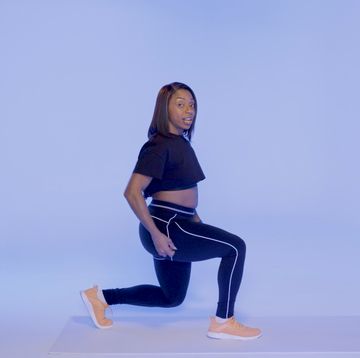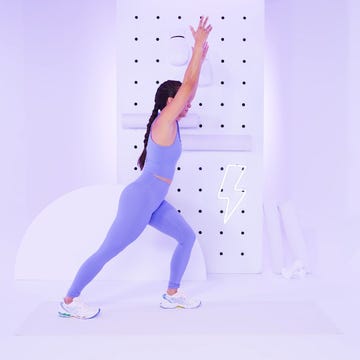Although I did cross-country in high school, I never considered myself a runner until my senior year of college when I picked up the sport for (dare I say it) fun. I would go at my own pace, listen to my favorite tunes, and spend time exploring the great outdoors on foot. Two years ago, I gathered up the courage to spontaneously sign up for a half marathon—something that my teenage self wouldn't have believed.
I’ve completed two more half marathons since then, and now I finally understand why people say they're “addicted” to running. Yes, finishing 13.1 miles requires you to build up mileage and leg strength over time, but the commitment doesn’t change your entire life. Plus, you get to scratch something pretty epic off your bucket list. All in all, it’s a pretty sweet deal! (Looking for a running challenge? Sign up for Women's Health's Run 10 Feed 10 10-K Race!)
But when I found out I got into the NYC Marathon earlier this year, I knew from the start it was going to be a different story. My running schedule jumped from two to three fairly easy runs a week to a rigorous training plan with five runs—four moderate and one long-distance—which had my legs initially saying “WTF”. Plus, I knew from the start, preparing for my 26.2-mile race would require much more than pounding the pavement—I'd have to do a lot of cross training and injury prevention to succeed.
And that’s where my relationship with lunges comes into the story. Although I haven’t incorporated lunges into my workouts before, the lower-body exercise is known to strengthen several leg muscles that are crucial when running—specifically your hamstrings, quads, and calves. Additionally, lunges are an amazing way to sculpt a peach-shaped booty and rock-hard abs. Sold!
Related: These Are The 4 Best Leg Exercises For People Who Want To See Serious Results
So when asked to challenge myself to perform lunges on a daily basis for two weeks straight, I jumped at the opportunity. I was just beginning my intensive marathon training, so the timing was perfect.
I met up with New York City physical therapist and co-founder of MOTIVNY, David Jou, to help decide which lunge would be most efficient for training. The verdict: the deficit four-point lunge. Not only does this require a traditional front lunge and back lunge, but also a side lunge that crosses over to a curtsy lunge—hence where the “four-point” comes from. Doing the forward and back lunges plus the side ones counted as one rep. I was instructed to complete three sets of 10 reps on one side and three sets on the alternative side, totaling 60 lunges.
“The point of doing this lunge is to create balance between muscle groups surrounding your joints and to take pressure off of them while you're increasing mileage and speed,” Jou told me. “Expect to not just feel stronger but also more fluid and controlled in your movements.”
That’s what I was truly hoping for. Oh, and did I mention we added in a three-inch step with an additional four-inch elevation underneath? Feel. The. Burn.
Kick leg day up a notch with these 20 lunge variations:
With starting my marathon training and my lunges schedule simultaneously, I knew that my body was in for a surprise that I could only hope would be pleasant. Here’s how it all went down over the two weeks—and what I learned in the process.
It Doesn’t Always Get Harder Before It Gets Easier (And Vice Versa)
On my first day, I wobbled and lost my balance a few times when trying to get my footing. But to my surprise, it actually wasn’t as hard as I anticipated—especially for someone who had never done lunges before. Maybe I was stronger than I realized, or maybe the adrenaline rush of starting my lunges challenge kicked in. Either way, I was feeling confident.
But a few days later, I felt extremely sore after a long run, and my legs were screaming while I did my lunge sets. Since the side lunges require a pause in the middle when crossing over, I felt every sore muscle in my legs—and then some.
Those first few days were a huge reflection of the two-week experiment as a whole. Some days I felt no pain, and other days I was feeling the gain. It didn’t necessary get easier or harder as time went on, but it just depended on how I was feeling in that particular moment. The best I could do was listen to my body day-to-day, and that got me through to the finish line.
Related: 'I Did 50 Crunches Every Day For A Month—Here's What Happened'
What I Did The Day Before Made A Big Difference
I felt the lunges much more on days when I had also worked out the day before, and the level of soreness depended on the intensity. Like I mentioned before, my marathon training has me running five days a week right out of the gate, so not only was I getting used to doing 60 lunges a day but ALSO running several more days than what I'm used to.
Sometimes it was fairly easy to predict when my legs would feel sore during my lunges, like the day right after doing my longest run of the week. But for my shorter mileage or rest days, I noticed that when I allowed a solid 24 hours to pass before doing my lunges again, the soreness was minimal to none compared to when I would wait less time. However, sometimes my legs would throw me for a loop and show up sore regardless, so it was often a fairly unpredictable process.
Lunges Are A Great Running Warm-Up
Although I consistently did my lunges based around a running schedule (I figured that getting sweaty once a day was better than twice), I tried to experiment with doing them right before or after workouts. And the one thing I discovered, at least for myself, is that doing lunges before running ended up being the most effective. It served as a warm-up stretch that allowed my muscles to loosen before hitting the pavement.
When I tried doing lunges after running, it was much more of a struggle because my leg muscles had already put in work and needed rest more than anything at that point. I feel like it was difficult to maintain proper form as I made my way off and then back on the step, and it felt like I wasn’t getting the most out of my stretches.
Related: 5 Women Share Exactly How They Totally Transformed Their Butts
Not All Of The Results Are Physical
I went into my two-week routine thinking that the payoff would be stronger legs and easier long runs. And while I honestly believe that doing lunges for 14 days straight made my muscles more solid, I was happy to discover that the results went beyond just the physical.
I’ve never been a huge stretcher, so knowing I was putting in the extra time to build up muscle and protect myself from injury helped me believe I was getting stronger. It’s one thing to actually become more fit over time, but there's also something to be said for the feeling of confidence you get in the process. It certainly helped me!
Related: 'I Did A 30-Day Pushup Challenge—Here's What Happened'
Runner Or Not, Lunges Are Worth It
Whether it’s for an end goal like a race or just for self-improvement, I recommend this particular type of lunge to anyone out there looking to build endurance and leg strength. Yes, it specifically works the muscles that are used for running and can be extremely beneficial to a range of athletic performers. But even if you're not training for a race, this routine can still help build a stronger you, and work wonders for boosting your health (and confidence). You might find yourself pleasantly surprised with the results—just remember the no pain, no gain policy.
